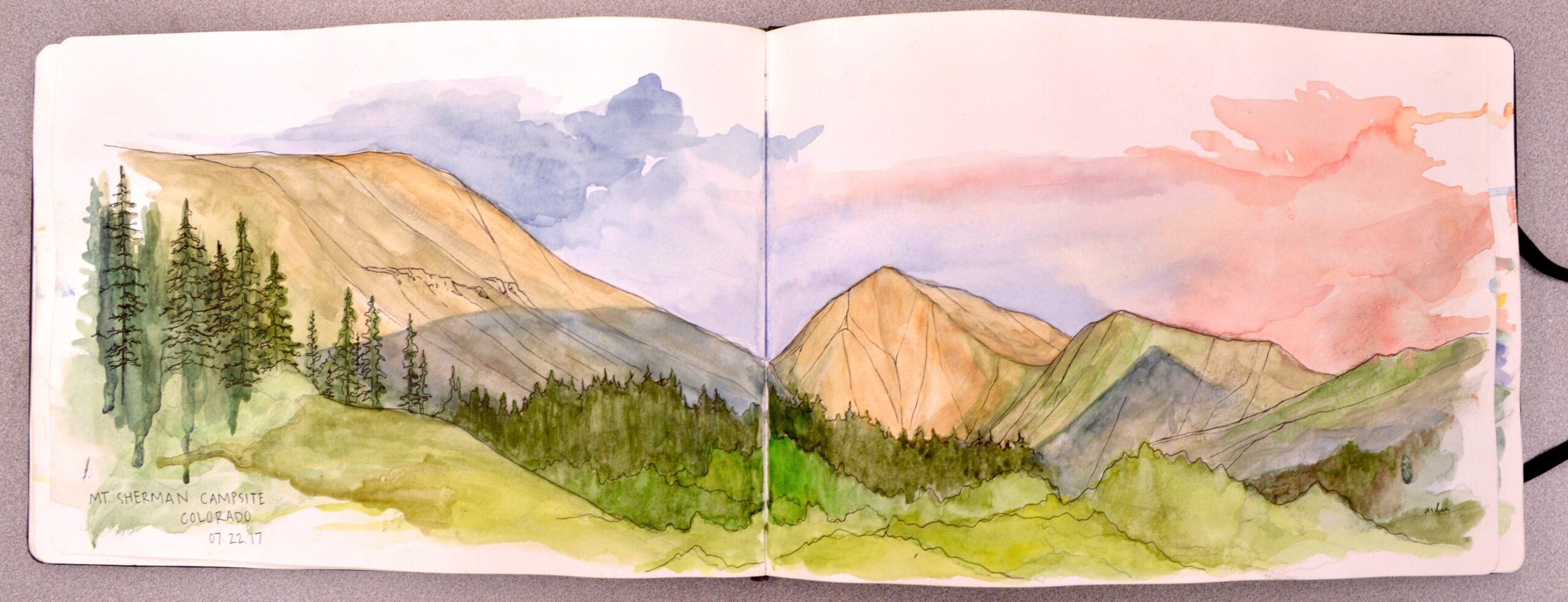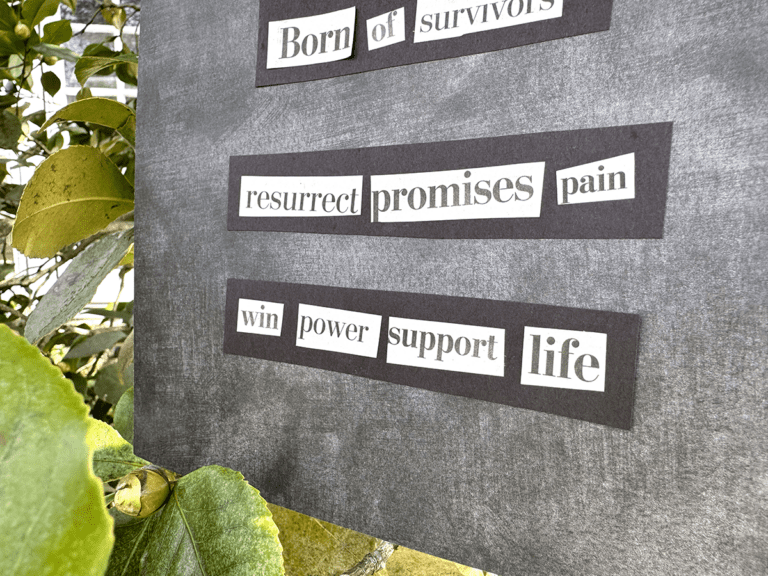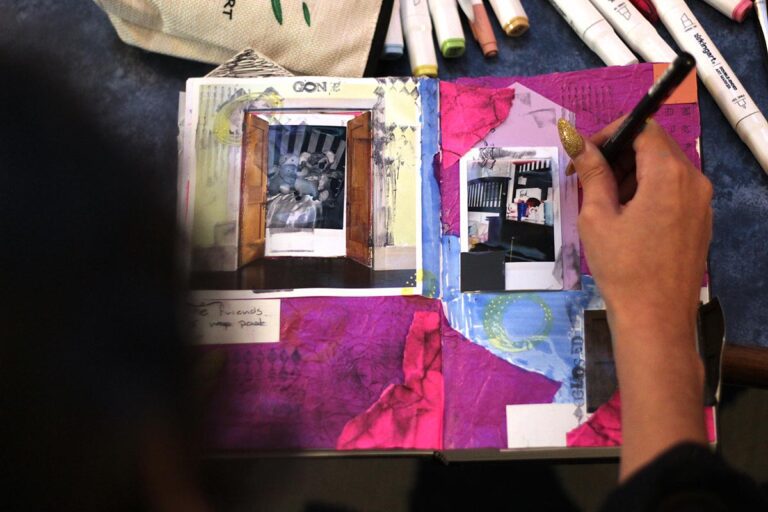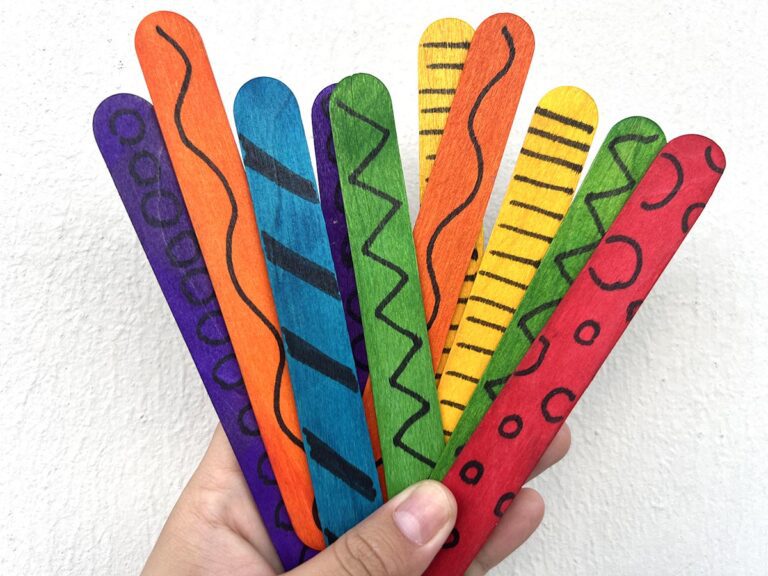Why do you use sketchbooks in your classroom? Because you feel like you should? Because you need bellringers or an activity for your early finishers? Because you hear other art teachers talk about how important they are? There is a myriad of reasons why teachers use sketchbooks. But even with the best intentions, we don’t always follow through with sketchbook goals. Too often, we fall short, and sketchbooks get left by the wayside.
But we can keep that from happening. We can get students working in their sketchbooks on a regular basis; they are a tool that can (and should) be a part of a consistent artmaking process.
Earlier this week, I talked to Andrea Slusarski on the Art Ed Radio podcast. The episode is all about her passion for sketchbooks, and how to best use them in your classroom. In the course of that discussion, we realized we have quite a bit of information about sketchbooks to share.
Below are some answers to common questions, resources you can use with your students, and ideas that will help make your sketchbooks a success.
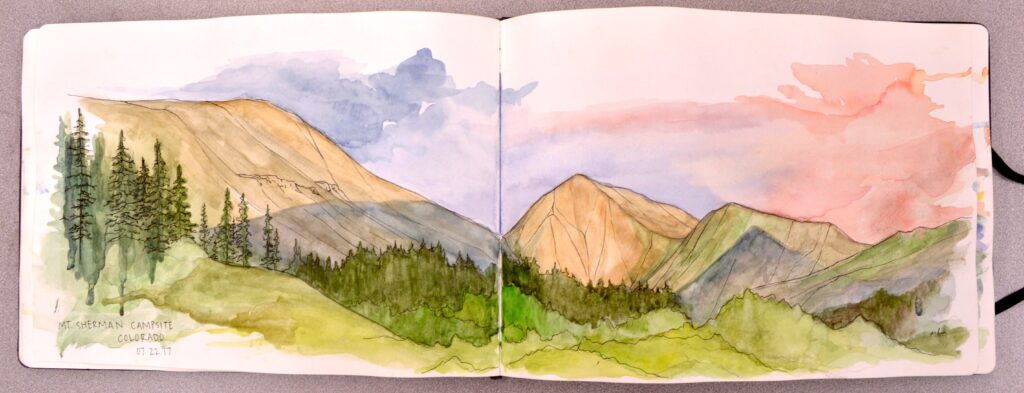
How Do I Get Started with Sketchbooks?
Ideally, sketchbooks should be a part of your students’ artmaking process. Whether you have your kids taking notes, trying out new media, exploring techniques, or anything else–all of that can be done in their sketchbooks. You simply need to figure out exactly which of those ideas you want to incorporate.
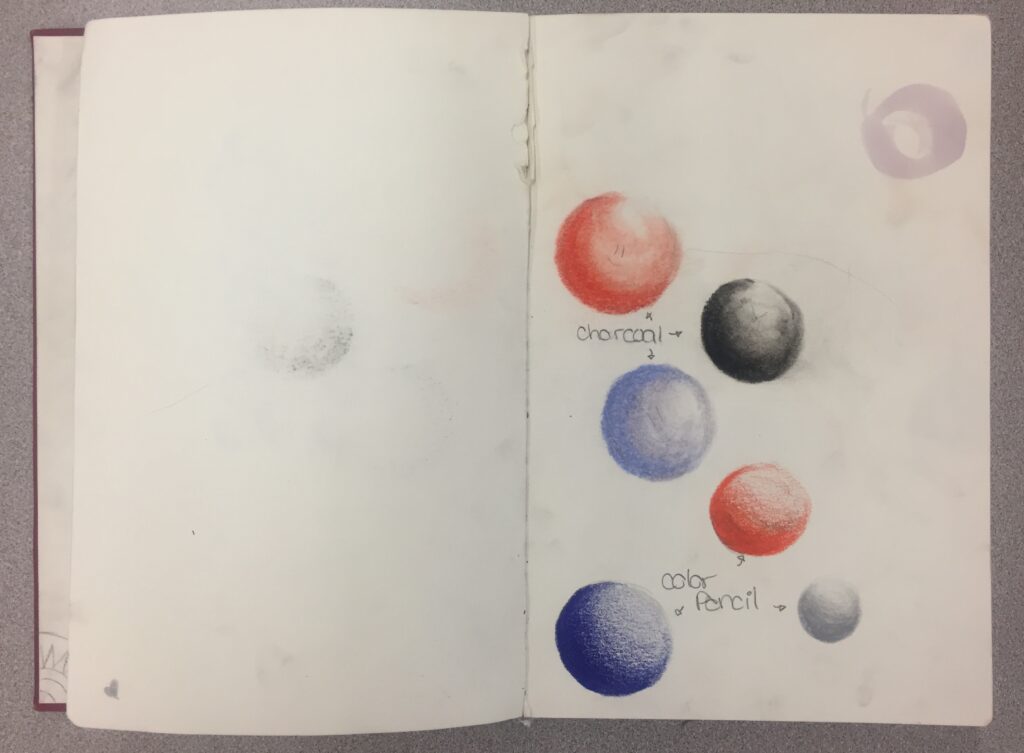
“If you want sketchbooks to work in your classroom, you need to first come up with a system,” Slusarski said. “What’s the purpose of your sketchbook assignments? What should they look like? When will you grade them? Answering those questions can only help set you up for success.”
Another idea is to start small. Can you begin using sketchbooks with just one or two of your classes? Finding your way on a smaller scale can help you see what works for you and what doesn’t. It can also show you what you may need to do if you want to expand to even more classes.
What Should I Assign When It Comes to Sketchbooks?
A great place to start is by assigning prompts. They are simple drawing ideas that deal with technique or creativity, or they may just about having fun with drawing. If your kids are more advanced, they can work with themes. This approach gives students basic ideas to get started but also allows them to develop their creative take.
You can also let kids work on their own. Let them create, let them explore, and let them decide which direction to take. “I tell students to collage, draw, paint, write, and to keep their sketchbooks with them at all times. It’s really fun to see what they do on their own,” Slusarski said.
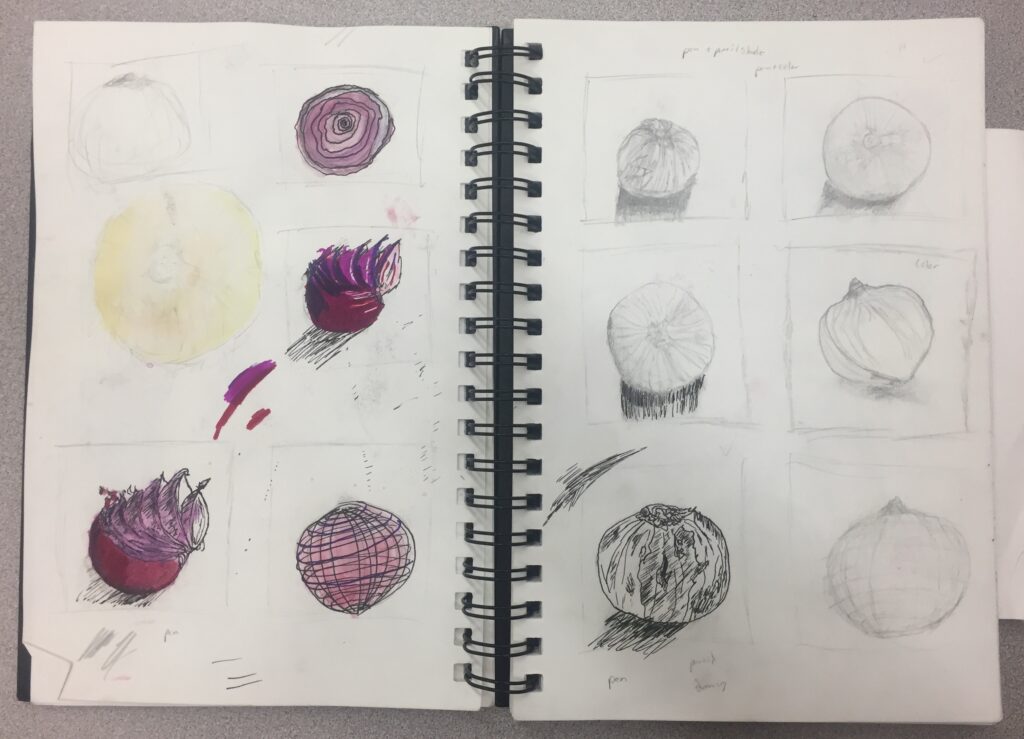
How Do I Grade Sketchbooks?
It doesn’t matter exactly how you grade your sketchbook–just that you have a simple system that allows you to follow through. You need to do what works for you. Some teachers grade on participation or completion, some grade on specific assignments.
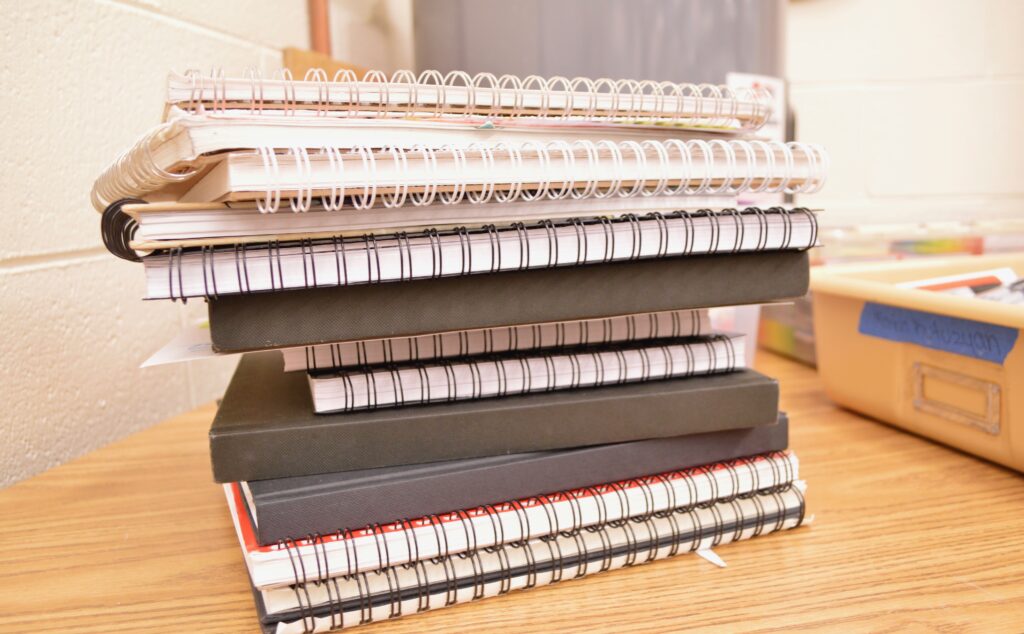
Slusarski described her grading system like this: “I check their sketchbooks every Thursday in class for a simple, studio habits check grade. I don’t make assignments, but rather I just want to see they are engaging with their sketchbooks. They can fill it with class assignments like their research and thumbnails for projects. As long as they are consistently working, I am happy.”
Should I Also Be Working in My Sketchbook?
You don’t have to create personal sketchbook work for your kids to be successful. But it helps.
On the podcast, Slusarski described how and why she shows her work to her students: “In my sketchbooks, I also have photos, writings, poems, scribbles, mistakes so they can see the endless possibilities of their sketchbook journey. I’m not only sharing with them my passions and adventures with sharing my sketchbook, but I’m also showing them how much I care about my sketchbook. I want them to see that this assignment isn’t me just playing teacher; this assignment is my goal for them as artists.”
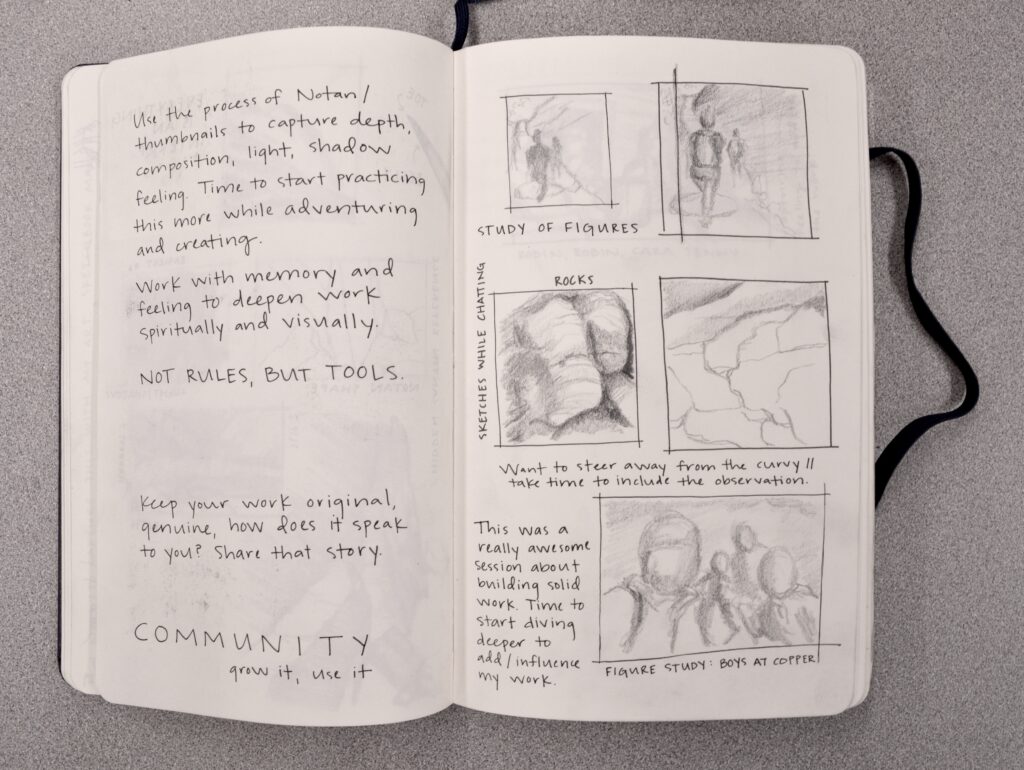
If you are looking for some creative ideas for inspiration to create work, see this article on making time and this article on journaling. Nic Hahn also has a few suggestions for you in this Art Ed PRO video.
If you are a PRO member, you can really dive deep to learn about sketchbooks in the Sketchbook Ideas that Really Work Learning Pack and in the Rethinking Your Drawing Curriculum Learning Pack.
Whether you are looking to get started with sketchbooks, or simply looking to get more consistent with how you use them, these ideas will be incredibly helpful. Start by deciding on your assignments, your goals, and your system for grading. Once you have a clear vision for what you want to do with sketchbooks in your classroom, all you have to do is follow through.
What advice can you share for someone just starting with sketchbooks?
What do you want to see from your students in their sketchbooks?
Magazine articles and podcasts are opinions of professional education contributors and do not necessarily represent the position of the Art of Education University (AOEU) or its academic offerings. Contributors use terms in the way they are most often talked about in the scope of their educational experiences.
